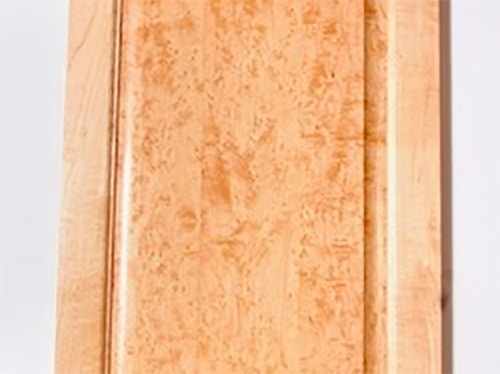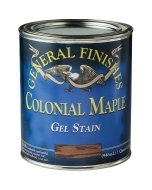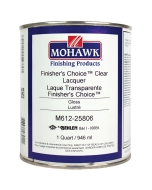How To Avoiding Blotchiness When Spraying Maple Lumber
I have not seen anything recently about how to get the splotchiness out of the finished look of maple lumber. I'd like to build new kitchen cabinets, and when I go to the local big box store, the maple cabinets I see are very evenly stained, but when I try it they come out poorly. I have tried shading and it comes out a little better, but the process is very difficult to keep consistency over a large area. Any suggestions? - Larry Smith
Chris Marshall: Just so other readers are clear, Larry, shading is when pigment stain, pigment colorant or a dye color is added directly to a finish, such as lacquer or varnish, and then applied with a paint sprayer. The color is part of the topcoat and not wiped into the bare wood first. Because the color and finish are mixed, the best procedure, according to Bob Flexner, in his book Understanding Wood Finishing, is to spray many highly thinned coats to build the color. Brushing or wiping on the finish will smear the color and make consistency difficult. You might be able to improve your results by spraying an even thinner colorant/finish formulation than what you're already using. Or, maybe the color inconsistency is coming from your spraying technique or the equipment you are using.
I don't use a spray gun to apply finish, but I've had good luck coloring maple with thick, wipe-on gel stain. The coloring agent is suspended in the gelled binder, so it doesn't penetrate the wood grain as deeply as an oil-based stain or water-based dye would. For my purposes, it works pretty well to minimize blotching. I also like the look of unstained maple, and with a clear finish, I don't have to deal with the blotching issues that go along with staining the wood.
Tim Inman: When you ask how to get the "splotchiness" out of the finished maple, I'm guessing your finishing goal is something that would look like the 1970s saddle leather brown that was popular in Ethan Allen furniture or the pumpkin orange/brown from Tell City or their ilk. That deep rich uniform color commonly seen on commercially made and finished maple/birch furniture is fake. There, I said it. It is.
Here is how it is done (in as much detail as I can get by with in this short answer): First, after the wood has been sanded smooth, the wood is "opaqued" or chalked out using a very very thin version of a tan or cream-colored masking stain. It is sometimes referred to as a blocking stain, but it is more like paint than stain. It must be sprayed on. This essentially obliterates all the natural grain and "blotchiness" of the real wood below it. Once the blocking stain or opaquing layer is down and dried, then other finisher's magic happens to help make the fake look appear to be real wood. Toner and shading colors are sprayed on (never wiped!) and the highlights, if there are any, are airbrushed into/onto the edges, etc. Clear coats are applied to build the shiny finish. Sometimes, a glaze is applied to make the wood look like it really has been stained and wiped -- but the glaze is probably the very last coat of, not the first as in a true wiping stain. In the end, the only contribution of the real maple wood is to be a rock hard substrate holding the finisher's art on the furniture. I've answered questions like this so many times over the years, usually after a disappointed craftsperson has attempted to conventionally finish a maple project and have it come out "unblotchy." It isn't in the cards. There is a much longer and more technically involved answer to this question, but that would be for another time and place. For now, at least you know.
Keep the inspiration coming!
Subscribe to our newsletter for more woodworking tips and tricks


